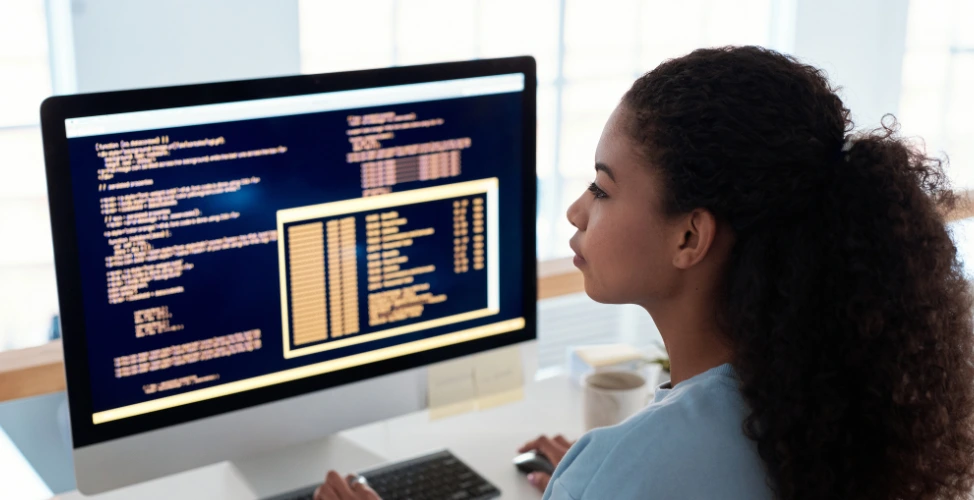Automated Testing for Blockchain: Reducing Bugs and Improving Efficiency
With millions—sometimes billions—of dollars flowing through decentralized systems, a single bug can lead to catastrophic consequences. This is where automated testing for blockchain becomes not just beneficial but essential for any serious development effort.

The Blockchain Testing Landscape
The testing landscape for blockchain applications differs significantly from traditional software testing. Understanding these differences is crucial for implementing effective automated testing for blockchain systems that can truly mitigate risks.
Unique Challenges of Blockchain Testing
Blockchain technology introduces several unique testing challenges that make automated testing for blockchain particularly complex. Unlike centralized applications, blockchain systems are immutable—once deployed, code cannot be easily modified or patched. This permanence raises the stakes considerably, as post-deployment fixes often require complex governance proposals or hard forks.
Smart contracts—the foundation of blockchain technology—operate in environments where changes are irreversible and frequently tied to financial transactions. As a result, integrating IT operations automation into blockchain testing is essential to ensure robust performance. Automated workflows must go beyond basic functionality checks to detect security vulnerabilities, assess economic incentive structures, and simulate rare edge cases that may arise under specific network conditions. By embedding automation into these processes, IT teams can enhance reliability, reduce manual effort, and maintain trust in decentralized systems.
Complexity of Distributed Systems
Blockchain networks are inherently distributed, with nodes operating across different geographical locations, hardware configurations, and network conditions. This distributed nature creates an exponentially larger testing surface compared to centralized applications.
Automated testing for blockchain must account for consensus mechanisms, network latency, race conditions, and various node states—all of which can affect how transactions are processed. Furthermore, the asynchronous nature of blockchain networks means that timing-related bugs can be particularly elusive, manifesting only under specific load conditions or network configurations.
Advanced Testing Technologies and Innovations
The blockchain industry has responded to these challenges by developing specialized testing technologies that address the unique requirements of decentralized systems.
Artificial Intelligence in Automated Testing for Blockchain
AI is revolutionizing automated testing for blockchain through several innovative approaches. Machine learning algorithms can now analyze smart contract code to identify potential vulnerabilities that might be missed in conventional testing. These systems learn from historical bugs and exploits to detect similar patterns in new code.
As part of advanced IT automation services, AI-powered property-based testing can automatically generate thousands of test cases, allowing for a much deeper exploration of a blockchain system’s state space compared to traditional unit testing. Some cutting-edge automation frameworks even incorporate reinforcement learning to simulate adversarial scenarios, helping developers anticipate how their smart contracts might respond under malicious or high-risk conditions. This level of intelligent automation enhances both the security and reliability of blockchain applications.
The integration of automated testing for blockchain with AI-powered analysis tools allows development teams to receive actionable insights rather than just pass/fail results, significantly improving their ability to address complex issues before deployment.
Continuous Integration/Continuous Deployment (CI/CD)
Modern blockchain development teams are increasingly adopting CI/CD pipelines specifically designed for distributed ledger technology. These pipelines integrate automated testing for blockchain at multiple stages, ensuring that each code change undergoes thorough validation before moving forward.
These specialized CI/CD systems often include:
- Automated contract compilation and deployment to test networks
- Execution of comprehensive test suites against multiple node configurations
- Security scanning and formal verification checks
- Gas optimization analysis
- Compatibility testing across different blockchain clients
By implementing automated testing for blockchain within CI/CD workflows, teams can maintain development velocity while ensuring that quality and security standards are consistently met.
Read more: eCommerce Automation: How to Streamline and Scale Your Online Store
Simulation and Emulation Technologies
Testing on actual blockchain networks can be slow and expensive. Simulation and emulation technologies provide alternatives that accelerate automated testing for blockchain applications.
Local blockchain environments like Hardhat, Ganache, and Brownie allow developers to run tests in controlled conditions that mimic actual network behavior. More sophisticated simulation tools can model complex network conditions, including latency, node failures, and varying degrees of network congestion.
Implementation Strategies and Considerations
Successfully implementing automated testing for blockchain requires thoughtful planning and consideration of various factors specific to your project’s needs.
Testing Strategy Development
A comprehensive testing strategy for blockchain applications should cover multiple layers and perspectives. When developing your automated testing for blockchain strategy, consider including:
- Unit testing of individual functions and modules
- Integration testing of contract interactions
- System testing of the entire protocol
- Economic incentive testing to validate token economics
- Security testing focused on known attack vectors
- Performance testing under various load conditions
- Governance testing for upgradeable contracts
Each layer requires different approaches and tools, but together they provide a defense-in-depth strategy that significantly reduces the risk of critical issues making it to production.
Cost-Benefit Analysis
Implementing robust automated testing for blockchain requires significant investment in tools, infrastructure, and expertise. However, this investment must be weighed against the potential costs of production failures.
When conducting a cost-benefit analysis, consider:
- The value secured by your protocol
- Potential reputational damage from failures
- Time and resources required for manual testing alternatives
- Opportunity costs of delayed releases due to testing bottlenecks
For most blockchain projects, the benefits of comprehensive automated testing for blockchain far outweigh the costs, particularly when considering the immutable nature of deployed code and the financial stakes involved.
Team Skill Development
Building team capacity for automated testing for blockchain requires investment in specialized skills. Consider developing expertise in:
- Blockchain-specific testing methodologies
- Security analysis techniques
- Formal verification approaches
- Performance testing for distributed systems
Cross-training developers and dedicated QA specialists creates a culture where testing is integrated throughout the development process rather than treated as a separate phase. This cultural shift is particularly important for blockchain projects where the consequences of bugs can be severe.
Read more: How Marketing Automation eCommerce Increase Customer Retention
Zero Bugs, Maximum Confidence: SmartOSC’s Blockchain Testing Breakthrough
SmartOSC has pioneered an integrated approach to automated testing for blockchain that combines multiple testing methodologies into a unified framework. This breakthrough system leverages AI-powered analysis, formal verification, and comprehensive test generation to achieve unprecedented coverage and confidence.
The results speak for themselves: projects implementing SmartOSC’s testing framework have reported a 94% reduction in post-deployment issues and significantly faster development cycles. By catching potential bugs early and automating repetitive testing tasks, development teams can focus on innovation rather than firefighting.
Conclusion
The future of blockchain depends not just on revolutionary ideas, but on the ability to implement those ideas with impeccable quality. Contact us today to discover how SmartOSC can assist you in streamlining your blockchain development with reliable, efficient automated testing solutions.


